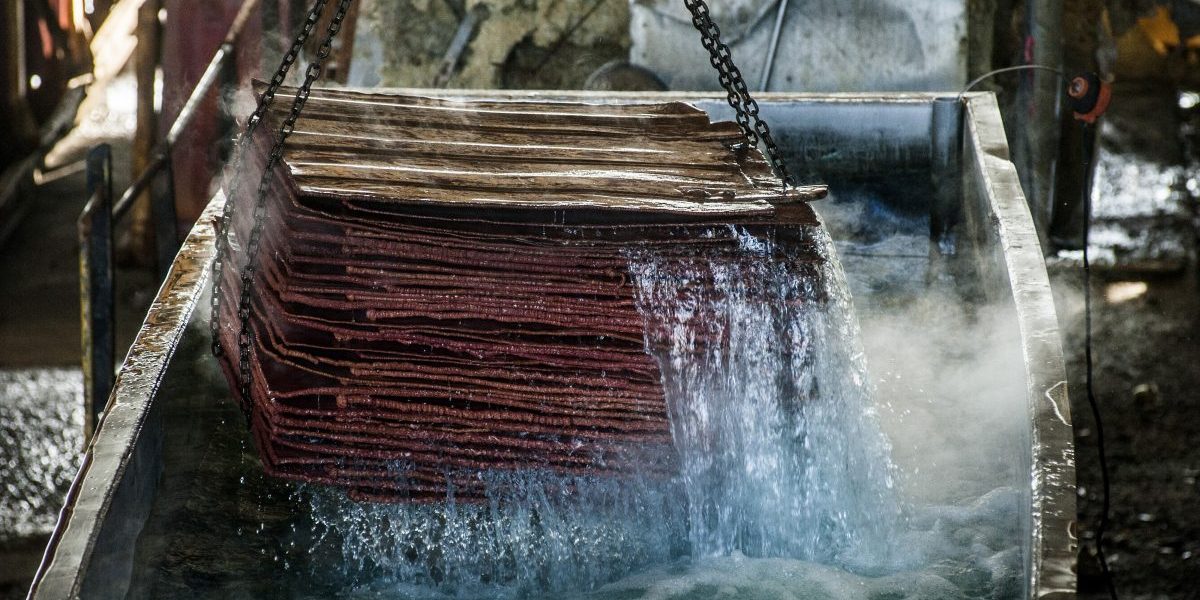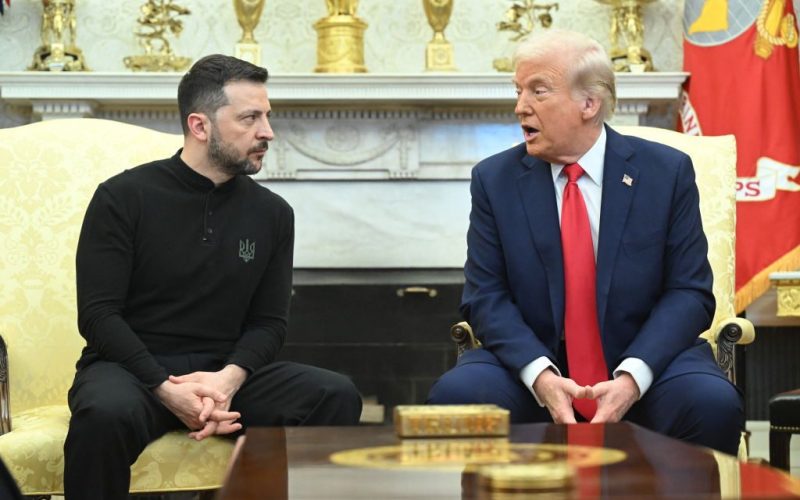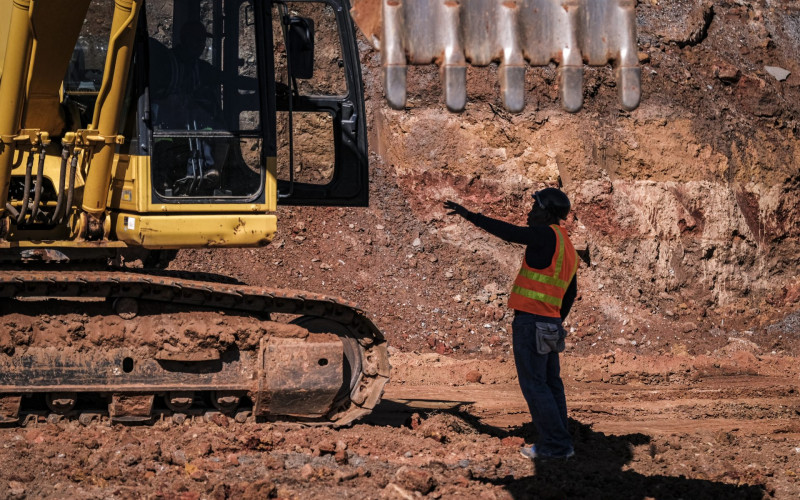Recommendations
- Further efforts are required to align the EU Raw Materials Initiative with the principles of the African Mining Vision.
- Transparency-orientated governance interventions in the minerals sector should be strengthened to improve the linkages between improved transparency and better governance.
- Stronger action by the EU and other international actors in addressing illicit financial flows from Africa is required.
Executive summary
Africa’s mineral resources are important to the EU, and a large number of EU-listed or -based mining companies operate in African countries. The extent to which host-country rules constrain the behaviour of companies sufficiently to ensure that they become contributors to development rather than agents of extraction or injustice is central to the relationship between extractive industries and development. This speaks directly to the governance challenge facing governments, private sector actors and the broader set of stakeholders impacted by mining activities, including local communities in mining jurisdictions.
Introduction
The EU’s historical reliance on raw material imports from Africa and other regions is set to continue as the EU transitions towards a low-carbon future. According to the World Bank, the world will require roughly double the volume of minerals and metals currently mined to fuel the move towards a carbon-neutral future [1]: this means chrome and magnesium for wind turbines (along with iron ore and cement), copper for solar panels, inverters and all manner of electric and plating products, cobalt and lithium for electric cars and batteries, platinum for fuel cells (if hydrogen charging challenges are solved), and so forth. Consumers of new technologies are increasingly concerned about ethical sourcing of their products. There is a risk, however, that these pressures will cause consumers and regulators to shift away from products relying on imports from fragile developing regions. This would be a mistake – despite a variety of governance challenges, the extractives sector still holds significant potential to contribute to economic development in Africa and already plays a critical role in supporting national economies and livelihoods within many African states.
The EU Commission adopted the Raw Materials Initiative (RMI) in 2008. The RMI has three pillars: a fair and sustainable supply of raw materials from global markets; a sustainable supply of raw materials within the EU itself; and efficiency and supply of secondary raw materials through recycling. In the Joint Africa–EU Strategy Action Plan 2011–2013, with particular reference to the first pillar of the RMI, cooperation on raw materials was identified as one of the primary areas for collaboration. Roadmap 2014–2017, which proceeded from the fourth EU–Africa Summit in 2014, reiterated the shared interest in cooperation in this arena.
Revisiting the resource curse
A startling number of resource-wealthy African countries are afflicted by a counter-intuitive relationship between their resource wealth and development. Contrary to expectations, mineral and hydrocarbon abundance appears to be strongly correlated with under-development.[2] The academic literature, since the early 1990s, has produced a considerable amount of work attempting to explain the causal mechanisms behind this so-called ‘resource curse’.[3] A relative consensus has emerged that the quality of a country’s institutions is the primary mediating variable for determining the likely development outcome associated with resource abundance.[4] In other words, if a country has strong institutions – social systems in which embedded norms, beliefs and values motivate regular accountability and empower local agency – at the time of discovering abundant, commercially exploitable resources, development outcomes are likely to be positive. In the absence of such institutions, the rent generated by commercial exploitation for political elites incentivises repression and exploitation over reform.[5] The transaction costs of reforming a polity and economy in the direction of broad-based growth are high when weighed against the material benefits of limiting the rent pool to politically connected insiders.[6] Windfall resource rents also reduce the incentives for ruling elites to diversify the economy and broaden the tax base, which in turn undermines the citizen–state accountability link.[7] Managing rents in this way also tends to create patronage pathways that are difficult to reverse if a large portion of the population becomes reliant on that kind of rent distribution model.[8]
It is not only that weak institutions at the time of resource discovery tend to grow weaker as rents start flowing. It is also often the case that resource exports drive up the value of the currency, which makes exports less competitive. The resource sector simultaneously tends to draw resources away from other productive sectors, the dual impact of which is known as Dutch Disease.[9] In extremely fragile institutional contexts, resource rents may inflame and prolong civil conflict.[10] Much remains unknown about the relationship between all these variables, but the strength or sensitivity of any given relationship is heterogeneous, differing markedly from one context to another. In this respect there is no place for one- size-fits-all solutions. However, because institutional quality is a relatively universal factor for explaining why some countries do well (Norway) [11] and some do badly (Nigeria) [12] from their resource wealth, it follows that principles of good governance, tailored for local contexts, are critical for obtaining better outcomes. This line of argument has fallen out of favour in recent years, largely because of the failure of externally formulated and imposed models of governance in contexts that were incentive-incompatible with the distribution of political power.[13] Recognising this, some of the language has shifted towards ‘better governance’ or ‘good enough governance’, the idea being that reform is preferable to perfection. Practitioners have to work with the world the way it is, rather than measuring their efforts against some abstract standard. Believers in governance have also realised that promoting transparency, while admirable, is often insufficient in itself to produce better development outcomes. Transparency does not always translate into meaningful citizen–state accountability, especially if unethical transfers can be hidden in plain sight in confusing financial statements.
Integral to governance questions are questions of structural transformation. Many African countries are stuck in a commodity trap, where they export high-bulk, low-value raw material and import finished products of far higher value. In response to this phenomenon, the Africa Mining Vision (AMV) was articulated in 2009 to craft a mining industry that was equitable, transparent and inclusive; one that would operate as a flywheel for development rather than a conveyor belt for exporting raw materials.[14] Countries might have well- governed extractive industries in basic compliance terms, but the management of risk and sustainability might be absent. True governance places emphasis on sustainability. Because the extraction of raw materials is finite, the extractive industries are fundamentally unsustainable. The AMV is therefore at pains to emphasise that mining has to catalyse development that will be sustained beyond the life of any given set of mines.
Juxtaposed against this noble aim, however, is the reality that raw material extraction is capital-intensive. Many African governments have neither the capacity nor the resources to develop their own geological databases from which they can charge upfront rents to interested mining firms. The risks of exploration and mining are therefore invariably carried by foreign firms with deep pockets that consequently reap the material rewards if the investment pays off. This sustains the narrative that mining is extractive in more than one sense of the word. It also tends to create the impression of unfairness, especially given the preponderance of illicit financial flows (IFFs) out of the continent. Big mining firms, for instance, may transfer profits into a subsidiary in tax havens without paying local tax on it, or sell assets at low prices to internal companies that sell them for higher profits elsewhere across the globe. Even if taxes are honestly paid, the export of unfinished raw materials to foreign lands where they are transformed into finished products tends to be detrimental to mineral-wealthy countries’ terms of trade. It is also a missed opportunity to catalyse industrialisation in the countries that possess the mineral resources. Moreover, efforts to reduce the flow of ‘conflict minerals’ – accessible alluvial diamonds, for instance – sometimes backfire, inadvertently crowding out artisanal miners and their livelihood options.[15] Lastly, mining companies tend to generate extensive negative externalities – the divergence between social or environmental costs and private returns – that they offload onto communities that can least afford it.[16]
Awareness of the challenges associated with resource extraction has led to a proliferation of formal governance efforts to improve transparency and accountability. While such efforts are laudable, increased regulation and insistence on transparency does not automatically translate into greater benefits for local populations affected by resource extraction.
Business for peace?
The EU sees private sector investment as critical to achieving the Sustainable Development Goals (SDGs), especially SDG 16, which is ‘to promote peaceful and inclusive societies for sustainable development, providing access to justice for all, and building effective, accountable and inclusive institutions at all levels’. All EU development policy integrates this goal, and therefore the private sector enjoys an elevated position in the RMI and the Joint Africa–EU Strategy. However, higher returns are available for companies prepared to risk investment in fragile contexts; instability does not, on average, appear to undermine this equation. There is thus a need for greater cognisance of the difficulties – for businesses – of operating in fragile and conflict-afflicted states among EU ‘systems shapers’ who want to hold private sector players effectively accountable.
Businesses operating in these ‘limited access orders’[17] – where elites limit access to political and economic opportunities through manipulating institutions to consolidate their own wealth and power – are faced with constraints that often lead to less-than-ethical deal- making between businesses and government officials. In many fragile contexts, this elite rent-seeking dynamic closes down the space for autonomous private action; in others, open and limited access orders may co-exist. In open orders, the opportunities for private sector actors to positively shape the conflict system are greater. In limited orders, players unwilling to become embroiled in conflict dynamics tend to disinvest or are crowded out. This opens up opportunities for less scrupulous players to enter the space, further entrenching the negative elements of the system. To the extent that businesses benefit from existing arrangements, such as a low-wage economy that they have no incentive to transform, they remain central conflict actors.
Private sector actors are not neutral or ‘apolitical’ actors in their contexts. However, they tend to conduct their business operations and the due diligence associated with it in narrow, business-orientated terms, and are often unwilling – although there is evidence that things are changing – to push for deeper institutional changes that can create greater openness and reduce fragility. This is because the repercussions for doing so invariably impact negatively on the bottom line. Efforts to promote transparency can entail large risks. In fact, the private sector’s capacity and capability as an agent of transformation to achieve SDG 16 targets is limited. As a result, it is necessary to treat with caution the simplistic claims that there is always a business case for peace.
While a focus on incentive structures and context is important, formal institutional arrangements should not be overlooked in the process of strengthening the normative role that EU-driven governance initiatives can play in improving extractive industry governance in African states. Extractive justice is attainable through a re-ordering of the values that currently define EU–Africa extractive relations. A mutually beneficial relationship requires an elimination of exploitation of vulnerable people and a reduction of the asymmetries (in power and knowledge) currently in force.
Conclusion
Better governance is clearly required to meet the objectives of the AMV and the EU’s RMI. But better governance now needs to include a stronger dialogue on how to bridge the apparently competing objectives of these two tools. It also needs to move away from the notion that better formal regulations on paper will necessarily result in better outcomes on the ground. Greater awareness of the potential unintended negative consequences of some governance initiatives is necessary. Moreover, it is clear that companies involved in natural resource extraction in African countries are going to have to think about governance in far deeper terms than mere corporate social responsibility or attaining a social licence to operate. They need to develop the courage to become ‘systems shapers’ rather than ‘systems takers’ when it comes to extractives governance. Due diligence needs to build in a greater understanding of political economy realities to avoid complicity in perpetuating injustice. Similarly, at the EU level, more attention has to be paid to what happens beyond efforts to create greater levels of transparency. It is clear that transparency in itself does not create more accountability and may not even practically reduce information asymmetry between extractors and local communities. Governance initiatives therefore need to build in an allocation of resources towards effective agency-creation at the community level.
At the highest level, if the EU is to be seen as a global governance actor, it needs to show greater commitment to reducing IFFs, especially out of resource-rich African countries. For distributional, recognition and procedural justice to be attained, much more work needs to be done.
Footnotes
[1] World Bank Group, ‘The Growing Role of Minerals and Metals for a Low Carbon Future’, June 2017, http://documents.worldbank. org/curated/en/207371500386458722/pdf/117581-WP-P159838-PUBLIC-ClimateSmartMiningJuly.pdf, accessed 24 May 2019.
[2] Ross ML, ‘What have we learned about the resource curse?’, Annual Review of Political Science, 18, 2015, pp. 239–59.
[3] The term was originally coined by Richard Auty. See Auty RM, ‘Industrial policy reform in six large newly industrializing countries: The resource curse thesis’, World Development, 22, 1, 1994, pp. 11–26. Also see Van der Ploeg F, ‘Natural resources: Curse or blessing?’, Journal of Economic Literature, 49, 2, 2011, pp. 366–420; Diamond L & J Mosbacher, ‘Petroleum to the people: Africa’s coming resource curse, and how to avoid it’, Foreign Affairs, 92, 5, 2013, pp. 86–98.
[4] Wenar L, Blood Oil: Tyrants, Violence, and the Rules that Run the World. Oxford: Oxford University Press, 2015; Mehlum H, Moene K & R Torvik, ‘Institutions and the resource curse’, The Economic Journal, 116, 508, January 2006, pp. 1–20. See also Brunnschweiler C & E Bulte, ‘The resource curse revisited and revised: A tale of paradoxes and red herrings’, Journal of Environmental Economics and Management, 55, 3, May 2008, pp. 248–64.
[5] Robinson JA, Torvik R & T Verdier, ‘Political foundations of the resource curse’, Journal of Development Economics, 79, 2006,
pp. 447–68; Ross LM, op. cit.; Wright J, Frantz E & B Geddes, ‘Oil and autocratic regime survival’, British Journal of Political Science, 45, 2013, pp. 287–306.
[6] North DC, Wallis JJ & BR Weingast, Violence and Social Orders: A Conceptual Framework for Interpreting Recorded Human History. New York: Cambridge University Press, 2009; Levy B, Working with the Grain: Integrating Governance and Growth in Development Strategies. Oxford: Oxford University Press, 2014.
[7] Herb M, ‘No representation without taxation? Rents, development, and democracy’, Comparative Politics, 37, 3, 2005, pp. 297–316.
[8] Acemoglu D, Ticchi D & A Vindigni, ‘Emergence and persistence of inefficient states’, Journal of the European Economic Association, 9, 2, 2011, pp. 177–208.
[9] Davis GA, ‘Learning to love the Dutch Disease: Evidence from the mineral economies’, World Development, 23, 10, 1995, pp. 1765–79.
[10] Ross ML, ‘A closer look at oil, diamonds, and civil war’, Annual Review of Political Science, 9, 1, June 2006, pp. 265–300.
[11] Larsen ER, ‘Escaping the resource curse and the Dutch Disease? When and why Norway caught up with and forged ahead of its neighbors’, American Journal of Economics and Sociology, 65, 149107, 2006, pp. 606–40.
[12] Sala-i-Martin X & A Subramanian, ‘Addressing the natural resource curse: An illustration from Nigeria’, Journal of African Economies, 22, 4, 2013, pp. 570–615.
[13] Acemoglu D & JA Robinson, ‘Economics versus politics: Pitfalls of policy advice’, Journal of Economic Perspectives, 27, 2, February 2013, pp. 173–92; North DC et al. (eds), In the Shadow of Violence: Politics, Economics, and the Problems of Development, 1st edition. New York: Cambridge University Press, 2012.
[14] AU, ‘Africa Mining Vision’, 2009, http://www.africaminingvision.org/amv_resources/AMV/Africa_Mining_Vision_English.pdf, accessed 24 May 2019.
[15] Berman N et al., ‘“This mine is mine!” How minerals fuel conflicts in Africa’, American Economic Review, 107, 6, 2017.
[16] Morrice E & R Colagiuri, ‘Coal mining, social injustice and health: A universal conflict of power and priorities’, Health & Place, 19, January 2013, pp. 74–79.
[17] North DC, Wallis JJ & BR Weingast, op. cit.
Acknowledgment
This policy brief is largely drawn from an article to be published in the South African Journal of International Affairs entitled ‘Governing with or against the grain? Challenges confronting African governments and foreign players in Africa’s extractives sector’. The policy briefing and journal article are outputs of the project ‘The European Union’s Normative Role in African Extractives Governance’, which is co-funded by the Erasmus+ Programme of the European Union.








